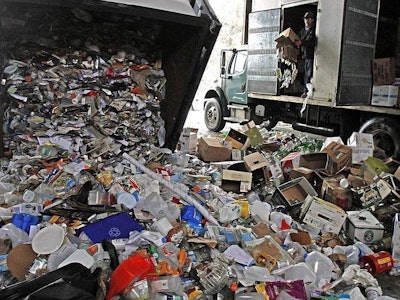
 On the whole, it’s been another good year for plastic manufacturing. In 2013, global plastic production was up to 299 million tons — a 4 percent increase from the previous year. The rise is part of a continuous growth trend that has lasted since 1950. In fact, according to a Vital Signs report from the Worldwatch Institute, plastics growth has averaged 8.7 percent every year for the last 50 years.
On the whole, it’s been another good year for plastic manufacturing. In 2013, global plastic production was up to 299 million tons — a 4 percent increase from the previous year. The rise is part of a continuous growth trend that has lasted since 1950. In fact, according to a Vital Signs report from the Worldwatch Institute, plastics growth has averaged 8.7 percent every year for the last 50 years.
Packaging is an especially big piece of that pie as consumers continue to replace glass and metal with plastic. The study shows that the average person living in Western Europe or North America consumes 100 kilograms (220.5 pounds) of plastic every year, mostly from packaging. People in Asia, meanwhile, consume about 20 kilograms a year, but that number is expected to climb.
While plastics boast numerous social benefits, such extending the shelf life of food and reducing waste, efforts to keep it from impacting the environment have failed to keep pace with its use.
It’s estimated that in the U.S., only 9 percent of post-consumer plastic was recycled in 2012 — the remaining 32 million tons was discarded. On a global scale, the UN Environmental Program reported that 22-43 percent of the plastic used ends up in landfills, where its value is wasted.
Some plastics are recovered from the waste stream so they can be recycled or used for energy production. But often industrialized nations ship recovered plastic to countries where air emissions controls are subpar and the process produces dangerous ash, which only shifts the environmental burden from the earth to the air.
It’s also well known that waterways are riddled with plastics. One recent study estimated that 268,940 tons are floating in the world’s oceans, posing risks to marine life.
So what’s to be done?
According to the report, efforts should be made to reduce unnecessary plastic consumption, increase the production of environmentally friendly packaging alternatives and switch to innovative designs that require less plastic.
The report also made these recommendations: “Businesses and consumers could increase their participation in collection in order to move plastic waste toward a recovery supply chain, and companies could switch to greater use of recycled plastics. Governments must regulate the plastic supply chain to encourage and monitor recycling.”
Read more on the study here.






















